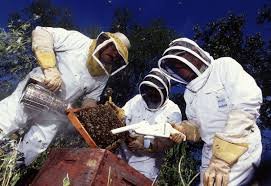Introduction
Bees are among nature’s most valuable workers, pollinating plants that feed both humans and wildlife. But when a hive ends up too close to your home, garden, or business, it can create conflict. Many homeowners think extermination is the only solution, but that harms both the bees and the environment. The best option is humane bee removal, which safely relocates bees without killing them. In this guide, we’ll explore why bees are essential, what’s causing their decline, and how to handle unwanted hives in ways that protect both people and pollinators.
Why Bees Matter More Than Ever
Bees are responsible for pollinating about one-third of the food we eat. From apples and almonds to pumpkins and peppers, bees keep global agriculture alive. They also maintain biodiversity by pollinating wildflowers, which support entire ecosystems. Without them, food supplies would shrink, prices would rise, and natural habitats would collapse.
👉 Related guide: Why Pollinators Are Important for Your Garden
Why Are Bees Declining?
Bee populations have been shrinking worldwide due to multiple factors:
1. Pesticides and Chemicals
Chemicals like neonicotinoids damage bees’ nervous systems, impair navigation, and shorten lifespans.
Outbound sources:
2. Parasites and Disease
Varroa mites, fungal infections like Nosema, and viruses weaken colonies from within.
3. Habitat Loss and Climate Change
Urban expansion, monoculture farming, and shifting climates reduce bees’ natural food and nesting areas.
Humane Bee Removal: The Eco-Friendly Solution
When bees take up residence near people, extermination is never the best answer. Humane bee removal ensures bees are relocated safely, protecting both the colony and the environment.
DIY Natural Deterrents
For small, early infestations, these methods may help:
- Smoke: Temporarily encourages bees to move.
- Garlic Spray: Repels bees with its odor.
- Citronella Candles: Useful indoors to discourage nesting.
- Peppermint Plants: Natural deterrent for outdoor spaces.
- Cinnamon Powder: Sprinkle at entry points to discourage hive building.
When to Call Professionals
Contact a licensed humane removal specialist when:
- A hive is large or aggressive (e.g., Africanized bees).
- Bees have entered walls, chimneys, or roofs.
- Someone in the household has bee sting allergies.
- You want bees relocated to a safe, sustainable habitat.
👉 Related guide: Safe Eco-Friendly Pest Control Options
Why Not Just Use Soapy Water?
Some sources recommend soapy water to kill bees. While it works, it’s dangerous, harmful, and unsustainable. It agitates bees, risks stings, and contributes to pollinator decline. Humane relocation should always be the priority.
How You Can Support Bee Conservation
Even if you don’t have a hive problem, you can help protect bees by:
- Planting bee-friendly flowers like lavender, clover, and sunflowers.
- Avoiding toxic pesticides—try integrated pest management.
- Installing bee hotels for wild pollinators.
- Supporting conservation groups like the Pollinator Partnership.
- Advocating for stricter pesticide regulations.
Conclusion: Choose Humane Bee Removal, Protect Pollinators
Bees are not pests—they’re partners in our survival. When they end up in the wrong place, humane bee removal is the responsible solution. It keeps homes safe while protecting pollinators that sustain our food systems and ecosystems. By choosing relocation over extermination, we ensure a healthier, greener future for everyone.
https://pesteraser.in/





